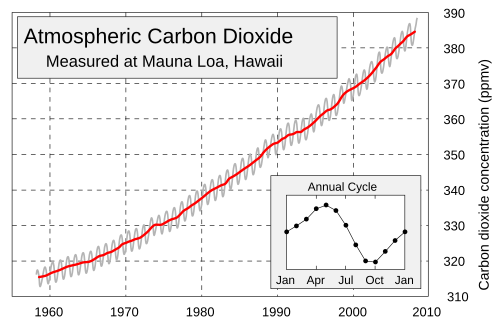- We'll have a quiz about elementary differentiation rules at the
end of the hour.
- Friday I may be a little late for the help session. I'll be there by 2:30, at any rate, barring anything unforeseen. And I may be on time....
- We ended class on Newton's method, which is a root-finding strategy due to Sir Isaac Newton, one of the developers of calculus.
The method exploits (even bad) guesses and tangent lines, whose roots are easy to find, to construct a succession of iterates which may converge to the root of interest.
Once again we see the importance of linear things -- and persistence!
- We also talked about derivatives of some additional trig
functions, in particular the tangent, cotangent, secant, and cosecant
functions.
- One thing we noticed is that tangent and cotangent, and secant and
cosecant are very similar (and hence their derivatives are very
similar).
It's the periodicity of the sine and cosine functions that make it so: as noted last time, while it is true that \[ \sin'(x) = \cos(x) \] one can also see that \[ \sin'(x) = \sin\left(x+\frac{\pi}{2}\right) \]
This is a trig identity ($\cos(x)=\sin\left(x+\frac{\pi}{2}\right)$ -- so we don't even really need two functions -- one is just a shift of the other); but it says something really interesting: differentiation is like a shift operator for sine.
Sine looks down the road by $\frac{\pi}{2}$ for the slope of the tangent line at a point:
- Similarly, we can transform a sine into cosine, via
\[
\sin(x) = \cos\left(x-\frac{\pi}{2}\right)
\]
- From this we can see, however, that
\[
\sin(-x) = \cos\left(-x-\frac{\pi}{2}\right)
\]
and, since sine is an odd function and cosine an even function,
\[
\sin(-x) = -\sin(x) = \cos\left(-(x+\frac{\pi}{2})\right) = \cos\left(x+\frac{\pi}{2}\right)
\]
We put these together, to get
\[
\cot(x) = \frac{\cos(x)}{\sin(x)} =
\frac{\sin\left(x+\frac{\pi}{2}\right)}{-\cos\left(x+\frac{\pi}{2}\right)} =
-\tan\left(x+\frac{\pi}{2}\right)
\]
- These are examples of compositions of functions: the computation of cosine can be accomplished by first an affine transformation -- \(x+\frac{\pi}{2}\) -- followed by an application of sine. If we define \[ g(x)=x+\frac{\pi}{2} \] and \[ f(x)=\sin(x) \] then we can define cosine as \[ \cos(x)=f(g(x)) \] I like to talk about "x going on a voyage", passing first by \(g\) and then, transformed by the experience, undergoing transformation by \(f\) -- finally becoming \(\cos(x)\). A metamorphosis!
- One thing we noticed is that tangent and cotangent, and secant and
cosecant are very similar (and hence their derivatives are very
similar).
- We discover how to compute derivatives of compositions of
functions, using the chain rule.
We will first derive the chain rule, then see how to make use of it.
- Sometimes there is more than one way to look at a function: for
example, on your chain rule preview, you had the function
\[
f(x)=\left(\tan(x)\right)^2
\]
Looks like a composition is most appropriate, but we can also think of
$f(x)$ as
\[
f(x)=\tan(x)*\tan(x)
\]
The product rule works!
Let's look at a few more of the compositions involved there: the chain rule is about differentiating function compositions, and the steps involve
- identification (of the functions making up the composition)
- knowing the derivatives of the component functions
- So it's on to section
2.5: The Chain Rule
- The chain rule is so critically important because of the
importance of compositions of functions:
Theorem (the chain rule): If $F(x) = f(g(x))$, and both $f$ and $g$ are differentiable at $x$, then \[ F^\prime(x) = f^\prime(g(x))g^\prime(x) \]
I personally think about the chain rule this way:
"f prime of stuff times the derivative of the stuff"; or where $f$ is the "outside" function (so $g$ is the "stuff"):"f prime of stuff times stuff prime.",
\[ F^\prime(x) = f^\prime(stuff)stuff^\prime \]
You can see that the rule is fairly simple, once you've identified the composition -- that is, once you've torn apart $F$ to find $f$ and $g$.
You might take a look at this summary from my pre-calc class to review compositions.
- The chain rule looks a little different in Leibniz notation, but
you may see it written this way, too: if we let $y=F(x)=f(u)$, where
$u=g(x)$, then
\[
F'(x)=\frac{dy}{dx} = \frac{dy}{du} \frac{du}{dx}
\]
This alternative version of the formula helps us to remember that $x$
is going on a journey, passing first through $g$ to become something
new ($u=g(x)$), and then continues on as $u$ through the function $f$
to become $y=f(u)$. It's a metamorphosis. It should be called
the "metamorphosis rule", if there were any justice in the world....
- The difficulty is often identifying the composition. We'll try
some easy ones first, then get to some ugly ones.
Before we do that, however, I'd like to motivate (rather than prove) the chain rule, using the limit definition of the derivative. Everything comes from that!
Basically, however, it relies on the tangent line: we want to use the fact that \[ g(x+h) \approx g(x) + hg'(x) \] Why does that make sense? Because it comes straight out of the limit definition, where we throw away the limit. That's why we have to write "$\approx"$:
\[ g'(x) \approx \frac{g(x+h)-g(x)}{h} \]
- Examples (from Stewart's
calculus): tearing apart functions
- $F(x)=\sqrt{1-2x}$
- $F(x)=6\cot(nx)$
- $F(x)=4 + 0.35 \sin(2 \pi t / 5.4)$
- Trickier: $F(x)=\sin(\sqrt{1 + x^2})$
- A sample problem involving compositions: model the seasonal variation in Keeling's CO2 data:

If time were measured in years from January, would
$V(t)=A\sin(2\pi{t})$ be a good model? What would be a good choice for the parameter $A$?
- We do have a worksheet, but I doubt that we'll have any time in class to work on it! Give it a go before class on Monday.
- The chain rule is so critically important because of the
importance of compositions of functions:
- A summary from another class: The Chain Rule
- A Keeling Analysis in Mathematica